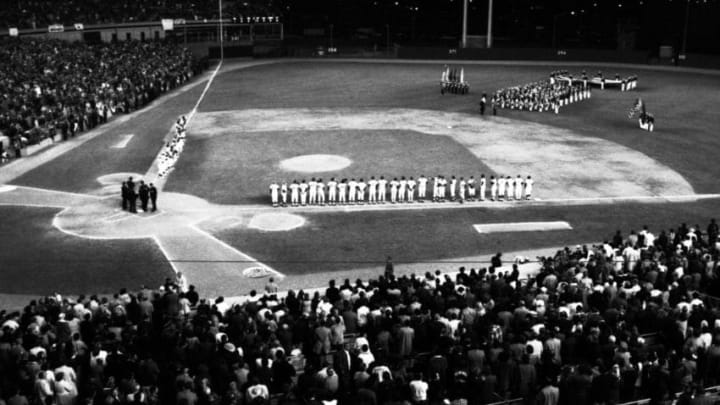The 1973 New York Mets defied the odds and made it to Game 7 of the World Series despite finishing the regular season at just 82-79. They managed to take down the Big Red Machine Cincinnati Reds in the NLCS before battling with the Oakland Athletics for a championship.
In one of the weakest National League East divisions of all-time, the Mets managed to climb above everyone else and get as close as they could without winning it all. It might not have been so difficult if the bats actually came to life.
It’s no secret the Mets were often one of the worst offensive teams in the league during their early days. In 1973, the frustration seemed to reach a new peak.
Mets pitching was awesome in 1973
The Mets had four men make 20+ starts in 1973 and each of them finished with an ERA at 3.20 or lower. Tom Seaver was the leader at 2.08 with George Stone (2.80), Jerry Koosman (2.84), and Jon Matlack (3.20) rounding out the foursome.
With four starters with ERAs like this, you might suspect a high winning percentage. Stone certainly benefitted from allowing a minimal number of runs. He had a remarkable 12-3 record for the Mets. Seaver was successful in this department as well, falling a victory shy of 20 wins. He ended the year at 19-10.
Koosman and Matlack weren’t so lucky. Their success at preventing runs didn’t help much with winning. They finished 14-15 and 14-16 respectively.
The blame falls on the inept offense.
Mets had the second-worst offense in 1973
The season included a grand total of 608 runners crossing home plate for the orange and blue. How bad was this? Only the San Diego Padres scored fewer runs at 548.
The MLB average this season was 682 so it’s not as if the Mets were bunched up right below where other teams were. They were far in the distance of putting up a respectable run total.
A big reason for this was the lack of home runs. Their 85 was another second-to-last-place finish. The St. Louis Cardinals, with 75 dingers, had fewer.
John Milner was their best power hitter with 23 home runs. He added 72 RBI, the second-most on the roster.
It was Rusty Staub with 76 RBI that led the team. His 15 home runs, however, were far fewer than you would want from your top rib-eye-guy.
Some more stats highlighting the offensives woes and pitching prowess
The Mets hit .246 as a team—yet another second-worst total in the league. They also happened to ground into 147 double plays which tied them for the third-most in Major League Baseball.
This continues to raise the question: how did they possibly make it so far?
We need to go back to the awesome pitching staff and thank them. A team ERA of 3.26 helped them to finish with the third-fewest runs allowed in the league. The Mets powered their way to victory with strikeouts, leading the majors with 1,027. Only the California Angels, with a guy by the name of Nolan Ryan on the roster, managed to cross into quadruple-digits with 1,010 of their own.
There aren’t too many things in baseball more frustrating than a bad offense. When it lasts an evening, it’s pain on the heart. Imagine it lasting all year long with such a terrific starting rotation!
Want your voice heard? Join the Rising Apple team!
The 1973 Mets did something I’m not sure any team ever will again. They literally were carried to the World Series on the backs of four starters. Partly because of injuries, the team had only four men with 100+ hits. As far as Miracle Mets teams go, this one might want to get the attention of the Catholic Church for canonization.
